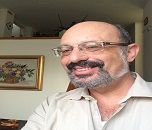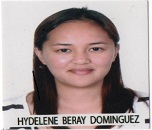Day 1 :
Keynote Forum
Jacob Gopas
Soroka University Medical Center, Israel
Keynote: Cellular Senescence in Hodgkin’s Lymphoma
Time : 09:30-10:15

Biography:
Abstract:
Hodgkin’s Lymphoma (HL) is a B cell originated malignancy of the immune system. Although the rate of cure is high, about 20-35% of patients relapse and about half of them eventually die of the disease or treatment-related late toxicities and secondary malignancies. Conceptually novel treatment strategies are thus needed, particularly for this category of patients. The malignant cells, called Hodgkin and Reed-Sternberg (HRS) cells, only make up 1-2% of the total tumor cellularity, the remaining mass comprising a mixed infiltrate population is thought to be recruited to the lymph node by HRS-driven pro-inflammatory signals. We propose that a sub-population of HRS cells, which we call herein large RS cells, have characteristics of senescent cells, and, thus produce large amounts of inflammatory mediators (the so-called Senescence-Associated Secretory Phenotype or SASP). Senescence is characterized by permanent cell cycle arrest and loss of proliferative capacity, despite continued viability and metabolic activity. We show that the senescence markers the cell cycle inhibitors p16INK4a and p21Cip1 are expressed in large RS cells in all HL biopsies examined. Moreover, the large RS cells are negative for Ki-67 staining, demonstrating that these cells have ceased to proliferate. We also show that large, ‘RS-like’ cells in a HL-derived line, L428, stained for the characteristic senescence marker β-galactosidase (β-gal). Oxidative stress and chemotherapy increased the proportion of β-gal positive large RS cells. Furthermore, we show that the large RS cells secrete high levels of cytokines. We suggest that these senescent RS cells may be responsible, at least in part, for creating a pro-inflammatory microenvironment, promoting HL pathogenesis, and mediating chemoresistance in relapsed disease. Understanding the pathways important for the establishment of senescence in HRS cells, as well gaining insight into targetable mechanisms for the eradication of these cells, will provide new therapeutic approaches for HL patients with recurrent or chemo-resistant disease.
Keynote Forum
Celestial T. Yap
National University of Singapore, Singapore
Keynote: Multiple roles of the cytoskeletal protein, gelsolin, in gastrointestinal tumour cells that contribute to dissemination and tumour progression

Biography:
Celestial T Yap has obtained MBBS degree from the National University of Singapore. She is engaged in clinical practice and subsequently obtained a PhD in Biomedical Sciences at the University of Edinburgh, UK. She is the Physiology Program Director and the Integration Lead Educator at the Yong Loo Lin School of Medicine, NUS, overseeing undergraduate education in clinical sciences. She leads the cytoskeleton and tumor biology laboratory, which focuses on cytoskeletal derangements and signaling pathways that promote tumor invasion and resistance, as well as biomarkers for cancer detection.
Abstract:
Gelsolin is an actin-binding protein which regulates the dynamics of the actin cytoskeleton and is involved in several pathological conditions including cancer. The roles of gelsolin in cancer are complex, there is evidence that it contributes to both tumor suppression as well as malignant progression. Studies suggest that gelsolin can act as a tumor suppressor, with decreased expression of gelsolin observed in cancers such as breast and lung cancers. On the other hand, high gelsolin expression has been correlated with aggressive tumors, such as with high grade urothelial and oral carcinomas, and lymphatic invasion in lung cancer. We identified gelsolin expression to be up-regulated in tumor tissues which exhibit disseminative behavior, such in lymph node metastases of intestinal-type gastric cancer, in primary tumors of diffuse gastric cancer and at the invasive edges of colon cancer metastases in the liver. We found that gelsolin can promote dissemination of gastrointestinal cancer cells by several mechanisms-gelsolin dysregulates the cellular redox milieu and promotes extracellular matrix degradation, leading to increased invasive activity of cancer cells. Gelsolin also interacts with the Hepatocyte Growth Factor (HGF)-cMET pathway and affects intercellular adhesion to promote cell scattering. In addition, gelsolin protects cancer cells from stress by activating autophagy. The multiple roles of gelsolin that contribute to cancer progression will be discussed.
- Oncology | Organ Specific Cancer | Cancer Biomarkers | Cancer: Treatment and Therapy | Oncology Case reports

Chair
Jacob Gopas
Soroka University Medical Center, Israel

Co-Chair
Celestial T. Yap
National University of Singapore, Singapore
Session Introduction
Hydelene B. Dominguez
SLU-Hospital of the Sacred Heart, Philippines
Title: Merkel Cell Carcinoma in an 82-year-old Filipino Male: A Case Report and Literature Review
Time : 11:15-11.45

Biography:
Hydelene B Dominguez has completed his Doctor of Medicine from School of Medicine, Saint Louis University, Philippines. She is currently a Resident Physician at the Department of Internal Medicine at SLU-Hospital of the Sacred Heart, Baguio City, Philippines.
Abstract:
Merkel Cell Carcinoma (MCC) is an uncommon, highly aggressive skin malignancy that develops usually in sun-exposed areas, most common on the head and neck area (55%). MCC is mainly a malignancy of UV exposed and fair skinned elderly Caucasians. We report the case of an 82 year old Filipino male who presented with progressive left leg swelling with multiple nodules of varying sizes. The nodules were excised and pathologic diagnosis revealed MCC. The patient underwent chemotherapy however expired due to acute respiratory failure type 1 secondary to acute kidney injury as a complication of tumor lysis syndrome. MCC carries a poor prognosis hence early detection is warranted and vital for patient’s survival.
Jacob Gopas
Soroka University Medical Center, Israel
Title: Nupharidines Enriched Leaf Extract of Nuphar lutea Reduces Experimental Melanoma Metastases
Time : 11:45-12:15

Biography:
Jacob Gopas has completed his BSc from Bar-Ilan University, Israel, PhD from Albert Einstein College of Medicine, USA and Post-doctorate from Ben-Gurion University. He is a Professor, Head of the Laboratory of the Institute of Oncology, Soroka University Medical Center, Israel and teaches cell and cancer biology. His research includes basic and clinical cancer biology, Hodgkin’s lymphoma, and new plant compounds against inflammation, pathogens and cancer. He has published more than 90 articles together with Israeli, German, Indian and American scientists and physicians and holds several patents (founded by the Israel Science Foundation, Israel Ministry of Health, Israel Ministry of Science, Israel Cancer Association and NIH).
Abstract:
Nuphar lutea L. SM., leaf and rhizome extracts (NUP), contain nupharidines as active ingredients. Nupharidines belong to the sesquiterpene lactones class of a naturally occurring plant terpenoids. This family of compounds has gained considerable interest for treating infection, inflammation and cancer. NF-кB is a central, downstream regulator of inflammation, cell proliferation and apoptosis. In our previous work we demonstrated strong inhibition of NF-кB activity and induction of apoptosis by NUP. In addition, NUP exhibited anti-inflammatory properties and partial protection from LPS-induced septic shock by modulating ERK pathway and cytokine secretion in macrophages. In the present study, we examined the effect of NUP in a B16 melanoma experimental murine lung metastasis model and its ability to affect the ERK and NF-кB pathways in variety of cell lines. We showed that NUP and cisplatin combined treatment was synergistic and reduced the lung metastatic load. In addition, NUP treatment inhibited TNFα-induced IкBa degradation and NF-кB nuclear translocation. We also observed that NUP induced ERK activation. Furthermore, ERK inhibition prevented NF-кB inactivation by NUP. Interestingly, NUP treatment induced ERK activation in a human melanoma cell line, expressing BRAF mutation. Overall, our work implies that co-administration of NF-кB inhibitors with standard anticancer drugs or radiotherapy, may act as sensitizers or as inhibitors of multidrug resistance.
Yu-Chieh Lee
Taipei Medical University Hospital, Taiwan
Title: NRF2 attenuates EMT by regulating the expression of snail in ovarian cancer
Time : 12:15-12:45

Biography:
Yu-Chieh Lee has completed her PhD from Taipei Medical University, Taiwan and Postdoctoral studies from Taipei Medical University Hospital of Gynaecology. She is interested in chemotherapy response biomarker, predictive biomarker chemotherapy and cancer biology.
Abstract:
Epithelial-Mesenchymal Transition (EMT) is a phenotype conversion that plays a critical role in the development of cancer progression. It is known that snail could regulate the progression of EMT. Nuclear factor erythroid 2 related factor 2 (NRF2), a key regulator of antioxidant defense system, protects cells against oxidative stress. We discovered overexpression of NRF2 is poor prognosis in human ovarian cancer patient’s tissue section by tissue microarray. In this study, expression of NRF2 in A2780, TOV-21G, TOV-112D and ES-2 human ovarian cancer cell lines and virus transformed human ovarian cell line A2780 was examined by qPCR and western blot. NRF2 expression was further studied in A2780 and transfection cell lines. By Western blot analysis, the performance of the NRF2 and snail is consistent in shNRF2 of A2780 cell lines. Down-regulation of NRF2 could increase cisplatin sensitivity and decrease cell migration and invasion. Therefore, we suggested NRF2 attenuates EMT by regulating the expression of snail in ovarian cancer.
Shuo Deng
National University of Singapore, Singapore
Title: Novel roles of gelsolin, a cytoskeletal protein, in regulating chemoresistance and cancer cell survival
Time : 13:45-14:15

Biography:
Shuo Deng has completed her PhD from National University of Singapore and continued her Postdoctoral training at Yong Loo Lin School of Medicine, National University of Singapore. She has published more than six papers in reputed journals and has been serving as a Reviewer in reputed journals.
Abstract:
Colorectal cancer is one of most common types of cancer worldwide. Current first line chemotherapeutic treatment of colorectal cancer comprises 5-fluorouracil (5-FU)-based regimen. However, response to 5-FU-based therapy varies in patients and development of drug resistance also impedes the effectiveness of treatment. Therefore, there is a pressing need to understand the mechanisms of drug resistance and identify new targets to help overcome chemoresistance. Accumulating evidence suggest that regulators of actin cytoskeleton play critical roles in the resistance to treatment and disease progression, via modulating cell survival/cell death pathways. Herein, we identify that gelsolin, an actin depolymerizing factor, contributes to resistance to 5-FU in colorectal cancer cells. Using colorectal cancer cell lines, we showed that gelsolin protected cells from 5-FU-induced cell death, while reducing gelsolin levels could sensitize cells to 5-FU treatment. Furthermore, gelsolin modulated autophagy, an important cell survival process against stresses, as a cytoprotective mechanism in response to 5-FU. We also demonstrate that gelsolin could be a potential prognostic marker for colorectal cancer patients, where patients with high levels of gelsolin and autophagy-regulating proteins showed shorter disease-free survival, compared to those with lower expression levels. In summary, we demonstrated a role of gelsolin in regulating autophagy, which contributes to 5-FU resistance in colorectal cancer cells. Our findings highlight gelsolin as a potential target for combating resistance to 5-FU based chemotherapy, and as a possible prognostic factor in patient survival.
Faith Y. Santos
Dr. Pablo O. Torre Memorial Hospital, Philippines
Title: Compliance with Guideline-Based Empiric Antimicrobial Therapy for Febrile Neutropenia in Adult Filipino Patients and their Effect on Outcomes
Time : 14:15-14:45
Biography:
Faith Y Santos is a Senior Medical Resident at the Dr. Pablo O Torre Memorial Hospital, Philippines. He is currently focusing on the art and science of oncology, as he is amazed and inspired by the simple complexity of the discipline.
Abstract:
Background: Febrile Neutropenia (FN) is a common complication of immune-compromised patients; whether due to infection, cancer, drug-induced, or other bone marrow failure states. With the incidence of patients with immune-compromised states on the rise, this life threatening complication is also increasing. The importance of initiating the appropriate empiric antibiotic therapy can prove to be life-saving, thus we examined how the initial choice of antibiotics influenced patient outcomes.
Objective: This study aimed to determine the effect of adherence to guideline-based antimicrobial therapy for adult febrile neutropenia patients in terms of patient outcomes.
Design: Retrospective cross-sectional analytical study.
Methods: This is a 10 year cross-sectional analytical study which was conducted by doing a retrospective chart review involving adult patients with FN from 2007 to 2016. We determined use of guideline-based antibiotics, examined the factors that influenced adherence, and investigated the effect of initial treatment on patient outcome.
Results: Among the 257 adult patients with FN included in the study, guideline-based antibiotics were administered to 65%. On multivariate analysis, the most powerful predictor of adherence to guideline-based antibiotics was the type of risk (p=0.000), with high risk patients thrice more likely to be given guideline-based antibiotics. Other predictors were physician specialty (p=0.036) and hematologic malignancy (p=0.045). This study showed that among low risk patients with FN, a trend towards patient discharge was observed (OR 1.18, CI=0.16–8.63). However overall, adherence to guideline based empiric antibiotic in treating adult FN patients did not correlate to patient discharge (p=0.134, OR 0.557, 95% CI=0.260-1.205).
Conclusion: In summary, our data suggest that adherence to guideline-based antibiotics in managing adult Filipino patients with febrile neutropenia does not correlate to better outcomes such as patient discharge. Significant factors associated with adherence to guideline-based antibiotics are physician specialty, hematologic malignancy and type of risk.
Neelum Aziz Yousafzai
Zhejiang University School of Medicine
Title: Exosome mediated multidrug resistance in cancer
Time : 14:45-15:15

Biography:
Neelum Aziz Yousafzai has completed her PhD in Oncology from Zhejiang University, China, MPhil in Biotechnology from the University of Health Sciences Lahore, Pakistan.She has attended many workshops and training programs related to oncology and she has delivered many oral presentations at international conferences and published abstracts in international conferences. She has more than 5 publications in different journals and received many awards. Her areas of interest are oncology, molecular biology, immunology, biotechnology, pathology and genetics.
Abstract:
Extracellular Vesicles (EVs), named as exosomes, were recently found to play important roles in cell-cell communication by transducing various biochemical and genetic information. Exosomes, secreted from either tumor cells or stromal cells including immune cells, can eventually remodel tumor environment to promote tumor progression such as metastasis and Multidrug Resistance (MDR). Therefore, the detection or targeting of biochemical and genetic cargos like proteins, lipids, metabolites and various types of RNAs or DNAs is believed to be valuable for the diagnosis and treatment of human cancer. In this review, we will summarize recent progresses in the research of exosomes especially its biological and clinical relevance to MDR. By doing so, we hope it could be valuable to the detection, prevention and intervention of MDR which is one of the major challenges for the clinical management of human cancers.
Hessah Alsulami
Arabian Gulf University, Saudi Arabia
Title: Stem Cells in Acute Lymphoblastic Leukemia and In-Vitro Assessment of the Effect of Parthenolide
Time : 15:30-16:00
Biography:
Hessah Alsulami has completed MRCPath and had Fellowship in Transfusion Medicine from University of Bristol in UK. She is the Director of Laboratory & Blood Bank in IAAH.
Abstract:
Introduction & Aim: Acute Lymphoblastic Leukemia (ALL) is the most common childhood malignancy, representing around one-third of all childhood malignancies. In Saudi Arabia ALL accounts for around 35% of all childhood cancers. Despite a high cure rate, some cases relapse. Current drug efficacy studies focus on reducing leukemia cell burden. However, if drugs have limited effects on LSCs, these cells may expand and eventually cause relapse. The experimental anti-leukemic drug Parthenolide (PTL) acts by inhibiting transcription factor Nuclear Kappa B (NFκB), activating p53 and increasing Reactive Oxygen Species (ROS) in leukemic cells. In the present study we assessed the in vitro effect of PTL on immunophenotypically defined Leukemic Stem Cells (LSCs) and normal Hematopoietic Stem Cells (HSCs). Because NFκB is constitutively active in LSC and PTL is a potent inhibitor for it, we also investigated the expression of activated NFκB (NFκB p65) in selected samples.
Method: Forty (40) ALL samples and 24 normal bone marrow and cord blood samples were included in this study after obtaining informed consent. The mononuclear cells from ALL and normal samples were isolated using density gradient separation. ALL samples were sorted into 4 LSC populations (CD34+CD38-CD19+, CD34+CD38+CD19+, CD34+CD38-CD19-, and CD34-CD38-CD19-). Unsorted and sorted cells were cultured with different PTL concentrations for 24, 48 and 72 hours. Post-culture cell viability was assessed using 7ADD in a flow cytometry-based test. Normal unsorted marrow and cord blood samples were tested under similar conditions. In addition, Colony Forming Unit assay (CFU) was carried out with normal samples to assess the effect of PTL on HSCs. In selected ALL and normal samples the expression of NFκB was assessed using PE labeled anti-NFκB p65 antibody.
Results: In ALL, LSCs form heterogeneous compartments with different percentages of the four LSC populations. This heterogeneity extended across and within cytogenetically classified groups of cases. There was no significant effect of PTL on the viability of normal cells at concentrations of ≤50 μM; but at 25 μM and 10 μM after 24 and 72 hours respectively it affected the ability of HSCs to form colonies. For ALL-LSCs PTL was significantly toxic at 10 μM and most cases with the exception of those with +3 karyotype abnormality and CD34-, CD38-, CD19- LSCs with t(9;22), showed >50% cell-death at 25 μM PTL concentration. The CD34+, CD38+, CD19+ LSCs showed significantly higher sensitivity compared to other subpopulations. ALL cases with limited response to PTL expressed significantly higher levels of pNFκB p65 as compared to PTL-sensitive cases.
Conclusion: The study concluded that LSCs are heterogeneous within and between cytogenetically classified groups of ALL. Overall, CD34+, CD38-, CD19+, and CD34+ CD38-, CD19 cells are the predominant LSC populations in B-ALL. PTL has a differential effect on normal HSCs versus ALL cells at lower concentrations in vitro; cord blood HSCs is more resistant than marrow cells. PTL also has a differential effect on LSC subpopulations. PTL sensitivity/resistance in ALL is related to the level of activated NFκB expression in these cells.
Yu-Chen Enya Chen
University of Queensland, Australia
Title: Activation of FcγR-dependent responses to therapeutic antibodies by Nurse Like cells requires PI3Kδ
Time : 16:00-16:30
Biography:
Yu-Chen Enya Chen is pursuing her PhD degree at University of Queensland, Australia. She has published a review paper as first author in BBA Cancer Review 2017. Her PhD project so far has presented an interesting study towards the understanding of the antibody resistant of patients with progressive chronic lymphocytic leukemia disease.
Abstract:
Antibody therapies for treating Chronic Lymphocytic Leukemia (CLL) remain a challenge for many CLL patients who are insensitive to antibody treatment. A high percentage of CLL patients that are resistant to the current combination therapy of chemotherapeutics and immune-therapeutics have always been a clinical challenge. Understanding the mechanisms driving disease progression and treatment resistance is a key to improving patient outcomes. Many studies including our own laboratories have shown that resistance to therapeutic antibodies against CLL is due to the survival signals from the Monocyte Derived Macrophages (MDMs), and also an acquired resistance of monocyte derived macrophages to participate in FcγR-dependent antitumor responses. However, the FcγR-dependent signaling pathway in macrophages has not been well studied. Our recently published data suggested that SYK and BTK are involved downstream of FcγR-dependent signaling pathway. In this study we investigate the involvement of PI3K isoforms as they have been known to be an important pathway regulator for cellular function in various immune cells such as T cells, B cells and NK cells as well as in cancerous cells. To examine the expression and involvement PI3K isoforms in contributing to FcγR-dependent ADCC by MDMs, we used different inhibitors to specifically target each PI3K isoform at a time to investigate the effect on ADCC responses by MDMs. Examination of PI3K expression showed that PI3Kα, β, and δ are expressed in MDM whereas PI3Kγ is below the limit of detection. We also reported that the PI3Kδ-selective inhibitor, idelalisib and the pan PI3K inhibitor BKM120 (Buparlisib) were able to inhibit ADCC in response to the CD20-targeting therapeutic antibody, obinutuzumab. Similarly, both buparlisib and idelalisib were able to inhibit AKT phosphorylation at concentrations that also inhibited ADCC. This is the first report to show that PI3Kd is involved in FcgR signaling in MDMs from CLL patients or in MDMs from any tumor type. Based on these findings we conclude that PI3Kd is a critical effector molecule for antitumor responses to therapeutic antibodies in CLL.
